Junior Volunteer Fire Fighter Dies and Three Volunteer Fire Fighters are Injured in a Tanker Crash - Alabama
 Death in the Line of Duty…A summary of a NIOSH fire fighter fatality investigation
Death in the Line of Duty…A summary of a NIOSH fire fighter fatality investigation
F2006-25 Date Released: April 11, 2007
SUMMARY
On July 26, 2006, a 17-year-old female volunteer junior fire fighter (the victim) died after the tanker truck she was riding in went off a narrow one-lane bridge. The tanker was enroute to a structure fire and failed to negotiate a sharp curve at the approach to the bridge. The tanker crashed through the bridge’s guardrail and landed upside down below the bridge. The driver and two other fire fighters riding in the tanker were injured in the incident. The victim was extricated by emergency personnel and pronounced dead at the scene.
NIOSH investigators concluded that, in order to minimize the risk of similar occurrences, fire departments should:
- ensure that fire fighters are always seated in an approved riding position any time the fire apparatus is in motion
- ensure that all fire apparatus are equipped with seat belts and that fire fighters always wear seatbelts
- ensure that tankers are operated at a safe and reasonable speed
- provide initial and refresher training (at least twice annually) to driver/operators as often as necessary for the safe operation of fire tankers
- develop and enforce written policies, procedures, and/or guidelines that identify the permissible and non-permissible tasks and activities of junior fire fighters
- establish an effective preventive maintenance program for all fire apparatus
- establish and develop written standard operating procedures for all fire fighting operations
- avoid using former fuel trucks as water tankers, if at all possible
Additionally States should,
- consider developing a State-endorsed junior fire fighter program that addresses the tasks that minors are permitted to perform in the fire service
- consider requiring vehicle safety inspections for fire apparatus.
INTRODUCTION
On July 26, 2006, a 17-year-old female volunteer junior fire fighter (the victim) was fatally injured after the tanker truck she was riding in went off a narrow one-lane bridge. The tanker was enroute to a structure fire and failed to negotiate a sharp curve at the approach to the bridge. The driver and two other fire fighters riding in the tanker were injured in the incident. On July 28, 2006, the U.S. Fire Administration (USFA) notified the National Institute for Occupational Safety and Health (NIOSH) of this incident. On September 12-13, 2006, a safety and occupational health specialist from the NIOSH Fire Fighter Fatality Investigation and Prevention Program traveled to Alabama to investigate this incident. The NIOSH investigator met with the department Chief, a fire fighter who was riding in the apparatus at the time of the incident, and other department members who were relatives of the injured fire fighters and victim. The investigator visited the incident site and took photographs. The investigator also reviewed the 911 dispatch logs, the vehicle’s maintenance log, the Alabama uniform traffic accident report, law enforcement photographs of the incident, and spoke with the county coroner.
Fire Department
The volunteer department has 35 members that serve a population of approximately 3,400 within a rural area of about 48 square miles. The department serves the community from a single station and provides coverage for an area school, several churches and several local businesses along with numerous poultry farms. The department has 3 engines, 2 tankers, a brush truck and a rapid attack rescue truck. The department is funded through the county and department-sponsored fundraising events. At the time of this incident, the department did not have written standard operating procedures (SOPs) or guidelines (SOGs). In addition, the department did not require any driver training.
According to department policy, junior members are prohibited from riding apparatus to calls or engaging in any suppression activities. (Note: Junior fire fighters travel via privately owned vehicle). Junior members are only permitted to participate in training at the station, assisting with fire fighter rehab on the fire ground, and assisting in activities after incidents such as rolling hose. The victim was the only junior member of the department. The victim’s father and brother are also members of this department. (Note: The victim’s brother was also riding in the tanker during this incident).
Training and Experience
The State of Alabama requires individuals be 18 years old and possess a valid driver’s license before they can become a member of a volunteer fire department. Alabama labor laws prohibit any one under the age of 18 from riding in a fire apparatus enroute to emergency calls or performing duties that include fighting fires.1
The 17-year-old victim had been a volunteer junior fire fighter for approximately 4 years and had received first aid/cardiopulmonary resuscitation (CPR) and emergency responder training through the department.
Alabama has no state training requirements for volunteer or junior fire fighters. The Alabama Fire College has a non-mandatory 160-hour volunteer fire fighter certification course.2, 3 None of the fire fighters involved in this incident had completed this training.
Road and Weather Conditions
The incident occurred on a one-lane bridge located at the bottom of a downgrade on a horseshoe curve (see Photo 1) approximately 4 miles from the fire station. The asphalt road leading to the bridge is approximately 23 feet wide and the road makes a very sharp right hand curve as it approaches the bridge. According to the fire department and County 911 dispatch, there have been several vehicular incidents (with one other fatality) at this location in the last three years.
The road has a speed limit of 45 mph and the State police estimated the speed of the tanker at 40 mph as it approached the bridge. The bridge has a posted cautionary speed sign of 25 mph and is approximately 15 feet wide. The road was dry and the weather was sunny on the day of the incident.
Equipment and Personnel
The tanker truck (also referred to as a tender in the western United States) was a 1982 model that was formerly a propane delivery truck (see Photo 2 and Photo 3). The tanker truck had an elliptical, 2,000-gallon tank and was full (Note: The exact type of tank baffling is unknown. Prior to the NIOSH field investigation, the towing company scrapped the tanker. The fire department reported containment-type baffling with three longitudinal baffles, which were probably the compartment bulkheads). The tanker truck had a diesel engine, two axles, 6 tires, a manual transmission, and an air brake system. The tanker truck had a gross vehicle weight rating (GVWR) of 33,000 lbs and was not equipped with an auxiliary braking system. The tanker truck was purchased used by the department in early 2005. The department did its own vehicle maintenance and a review of the maintenance log indicated only that minor repairs had been performed on the apparatus. The vehicle had two seats and was not equipped with seat belts.
The State of Alabama motor vehicle regulations do not require that fire apparatus be inspected annually. The State has no requirements that emergency vehicle operators possess any special training or driver’s licenses such as a commercial driver’s license (CDL). The vehicle was totaled in the incident and the driver was not issued any moving violations.
INVESTIGATION
On July 26, 2006, at 1859 hours, the department was dispatched as mutual aid to a structure fire. Fire Fighter #1 arrived at the station at approximately 1900 hours and donned his bunker gear and proceeded to drive Tanker 1 from the station. (Note: Three engines from the department were already enroute to the fire). As Fire Fighter #1 was pulling out of the station, Fire Fighter #2, Fire Fighter #3 and the victim arrived at the station in a privately owned vehicle (POV). They parked the POV and jumped into the cab of the tanker. (Note: Fire Fighter # 2 and Fire Fighter #3 were wearing street clothes but had their bunker gear bags with them. Since the victim was a junior member she was not issued bunker gear as it is department policy that junior members do not engage in fire suppression).
Fire Fighter #2 sat in the passenger’s seat with his gear bag at his feet. Since the tanker only had two seats, the victim sat on the floor of the cab between the seats in front of the engine hump. Fire Fighter #3 shared the inside edge of the passenger seat with Fire Fighter #2. None of the fire fighters were wearing a seat belt. (Note: Although the vehicle was originally equipped with seat belts, they were either broken or missing). The four fire fighters departed the station at approximately 1908 hours and the driver radioed dispatch that Tanker 1 was enroute. (Note: County 911 Dispatch did not have a dispatch or enroute time for Tanker 1, but the log indicated that they were unable to copy a unit number due to siren noise in the background).
At approximately 1915 hours, the tanker approached the bridge. The driver began braking as the tanker started downhill. One of the injured fire fighters remembers hearing “You’re going too fast!” The driver replied “I’ve got it under control!” Then just prior to the horseshoe curve, the driver reported that the brakes failed. The driver downshifted as he reached the turn to the bridge, but the truck struck the guardrail on the driver’s side. About midway over the bridge, the truck began to roll onto the driver’s side. Prior to reaching the end of the bridge, the tanker rolled onto the driver’s side, crashed through the guard rail and landed upside down approximately 20 feet below in the creek bed (see Diagram).
The accident was reported to 911 dispatch by an area resident. Department vehicles enroute to the structure fire turned around (Note: Just prior to their arrival to the fire ground, the structural fire was brought under control by the initial responding volunteer department) and responded to the incident scene (see Photo 4). Fire Fighter #1 (the driver) was able to wiggle out of his turnout coat and free himself from the wreckage. He crawled out the broken driver’s side window. The other three fire fighters were trapped upside down in the wreckage of the tanker’s cab. Emergency responders used hydraulic rescue tools to free the trapped fire fighters in an extrication that lasted approximately one hour. Between 1919-1946 hours, three additional departments arrived on scene to assist with the extrication and set up a landing zone for a Medical Evacuation (MedEvac) helicopter. At 2019 hours, the MedEvac helicopter arrived on scene to transport the injured fire fighters. At 2035 hours, the MedEvac helicopter departed for the hospital with Fire Fighter #2 and Fire Fighter #3. The victim was the last to be extricated from the wreckage and was pronounced dead at the scene at 2105 hours by the county coroner.
Fire Fighter #1 was treated and released from the emergency room with burns to the hands, head, shoulders and chest from hot engine oil that spilled into the cab (Note: The engine oil escaped from the crushed engine valve cover). Fire Fighter #2 was transported to a regional trauma center with multiple broken vertebras, a head contusion, and numerous second degree burns from hot engine oil. Fire Fighter #2 was immediately transferred to a regional burn center and was hospitalized for about two weeks. Fire Fighter #3 was also transported to a regional trauma center. He fractured both wrists and two ribs, suffered a head contusion and multiple abrasions. Fire Fighter #3 was hospitalized for two weeks after the incident.
Cause of Death
According to the county coroner, the cause of death was blunt force trauma with head and chest injuries.
RECOMMENDATIONS/DISCUSSIONS
Recommendation #1: Fire departments should ensure that fire fighters are always seated in an approved riding position any time the fire apparatus is in motion.
Discussion: The victim and one of the injured firefighters in this incident were not fully seated in the apparatus. The victim was seated on the floor of the cab between the driver’s and passenger’s seats and Fire Fighters #2 and #3 were sharing the passenger’s seat. Fire fighters should never ride in fire apparatus in a location other than an approved seat. NFPA 1500, Standard on Fire Department Occupational Safety and Health Programs states that “All persons riding in fire apparatus shall be seated and belted securely by seat belts in approved riding positions and at any time the vehicle is in motion. Standing or riding on tail steps, sidesteps, running boards, or any other exposed position shall be specifically prohibited.” 4 NFPA 1500 further states “On existing fire apparatus where there is an insufficient number of seats available for the number of members assigned to or expected to ride on that piece of apparatus, alternate means of transportation that provide seated and belted positions shall be used”. 4
Recommendation #2 : Fire departments should ensure that all fire apparatus are equipped with seat belts and that fire fighters always wear seatbelts.
Discussion: Although the tanker involved in this incident was originally equipped with seatbelts when it was manufactured, they were missing at the time of this incident. Fire departments should retrofit older vehicles with seatbelts for all approved riding positions. Seatbelts that are missing or damaged should be immediately replaced. Vehicles not equipped with seat belts should be taken out of service. A vehicle operator who is properly secured by a seatbelt will have a better chance at maintaining control of the vehicle in an emergency situation and belted occupants will have an increased likelihood of surviving a crash.4-6 Fire departments should develop and enforce SOPs on the use of seatbelts. The SOPs should state that all fire fighters on board must be seated and secured in an approved riding position whenever the vehicle is in motion. Wearing a seatbelt can minimize the risks to the driver and other occupants in the event a crash occurs.4-6
Recommendation #3 : Fire departments should ensure that tankers are operated at a safe and reasonable speed.
Discussion: The Alabama uniform traffic accident report estimated the speed of the tanker at 40 mph as it approached the bridge. The cautionary speed sign indicated 25 mph and this should be considered the maximum safe speed limit for a passenger vehicle (Note: A cautionary speed sign is not intended for heavy trucks or commercial vehicles). Fire apparatus should be operated at a much slower speed though curves than the suggested speed that appears on the warning sign. Tankers should never be driven at a speed at which the vehicle cannot be controlled.5-7 Many fire departments do not equip tankers with red lights and sirens as first response vehicles, but have opted to equip them with yellow or amber lights and use them as fire ground support vehicles.
Recommendation #4 : Fire departments should provide initial and refresher training (at least twice annually) to driver/operators as often as necessary for the safe operation of fire tankers.
Discussion: Driver training should be conducted in accordance with NFPA 1451, Standard for a Fire Service Vehicle Operations Training Program and NFPA 1002, Fire Apparatus Driver/Operator Professional Qualifications.8, 9 These standards state that departments should establish and maintain a driver training education program and each member should be provided driver training not less than twice a year. During this training, each driver should operate the vehicle and perform tasks that the driver/operator is expected to encounter during normal operations to ensure the vehicle is safely operated in compliance with all applicable State and local laws. Driver training should address vehicle characteristics, capabilities and limitations. Tankers, for example, tend to be heavier and to have a higher center of gravity than other fire vehicles.6 Both of these factors affect the driver’s ability to control a tanker. Based on physics and inertia, a top heavy vehicle, such as a tanker, is inclined to tip or roll over if driven through a curve at an unsafe speed.6
Recommendation #5 : Fire departments should develop and enforce written policies, procedures, and/or guidelines that identify the permissible and non-permissible tasks and activities of junior fire fighters.
Discussion: Although this volunteer department did not have written SOPs, they did have an unwritten policy that junior members were not permitted to ride fire apparatus on calls. It was unclear why the victim responded during this call. Department personnel speculated that the victim’s 18th birthday was less than a month away at which time she would have been a full department member. Guidelines and procedures for junior members should be in writing, readily available to members of the fire department, and incorporated into written departmental SOPs. Fire department personnel should be made aware of the requirements, responsibilities and permitted activities of junior fire fighters to help ensure that they are assigned appropriate tasks and that they are appropriately supervised. The victim was not under the supervision of an officer during this incident.
Recommendation #6: Fire departments should establish an effective preventive maintenance program for all fire apparatus.
Discussion: Used fire apparatus obtained by fire departments should be fully inspected, repaired as needed, and road tested by a qualified mechanic prior to being placed into service. NFPA 1911, Standard for the Inspection, Maintenance, Testing, and Retirement of In-Service Automotive Fire Apparatus states that fire apparatus should be serviced and maintained to keep them in safe operating condition and ready for response at all times.10 Maintenance schedules should be established and recorded as an integral part of a well-planned maintenance program. The maintenance program should include daily, weekly, and periodic maintenance service checks. The maintenance checks should be based on the manufacturer’s service manuals, local experience, and operating conditions. In this incident, the tanker was not equipped with seatbelts and the driver reported braking problems. Vehicles with mechanical deficiencies should be taken out of service until properly repaired. The department in this incident performs its own vehicle maintenance and there are no procedures in place on when to declare a vehicle unsafe and remove it from service until it is repaired.
Recommendation #7: Fire departments should establish and develop written standard operating procedures for all fire fighting operations.
Discussion: The fire department involved in this incident did not have written standard operating procedures. Unwritten directives are difficult to learn, remember, and apply.11 Fire departments should develop SOPs for all fire fighting operations and these operational procedures should be committed to writing.12 Each fire fighter should have a written copy of the SOPs and they should be the subject of company drills. NFPA 1500, Standard on Fire Department Occupational Safety and Health Programs 8.1.2 states, “an incident management system that meets the requirements of NFPA 1561, Standard on Emergency Services Incident Management System, shall be established with written standard operating procedures applying to all members involved in emergency operations.”4
The International Association of Fire Chiefs (IAFC) has developed policies and procedures for emergency vehicle safety.13 According to the IAFC, many vehicular accidents could be prevented through the proper implementation and application of SOPs. Their guidance document “Guide to IAFC Model Policies and Procedures for Emergency Vehicle Safety” should be used as a resource by fire departments for developing their own departmental SOPs. Other resources have been developed by the National Volunteer Fire Council (NVFC) “Emergency Vehicle Safe Operations for Volunteer and Small Combination Emergency Service Organizations” and the U.S. Fire Administration’s “Emergency Vehicle Safety Initiative.” 14, 15
Recommendation #8: Avoid using former fuel trucks as water tankers, if at all possible.
Discussion: According to the U.S. Fire Administration a large percentage of serious crashes involving fire department tankers can be attributed to tankers that were crafted from non-fire service vehicles.6 In some cases, the “new” tanker is placed on a used vehicle that is already in questionable mechanical condition. In other cases, a reliable vehicle chassis is obtained and then an excessive amount of weight is added to it.
A common practice is to develop a fire department tanker using a converted fuel oil or gasoline tanker.6 Even though these vehicles may be in excellent condition when the fire department acquires them, these chassis frequently are not designed for the weight of the water that will be carried on them. One gallon of water weighs 8.33 pounds. One gallon of gasoline weighs 5.6 pounds, and one gallon of fuel oil weighs 7.12 pounds. Thus, if the vehicle’s tank holds 2,000 gallons, water will weigh 5,460 pounds more than gasoline and 2,420 pounds more than fuel oil. This added weight creates significant safety issues for the vehicle. Another weight-related issue commonly found on retrofit tankers is the addition of pumps, piping, and other associated equipment to the apparatus. This equipment may further complicate the overweight problems discussed above. The weight of equipment must be considered along with the weight of water when determining the safe carrying capacity of the equipment.
Another problem with converting fuel tankers is that in many cases the tanks are improperly baffled for fire department use.6 These vehicles are often designed to be driven completely full or completely empty. Thus, when the vehicle is being driven with a partially filled tank, liquid surges within the tank can result in the vehicle going out of control. Fire departments considering converting these vehicles for emergency use must add baffles or baffle balls to the inside of the tanks before placing them in service. Another significant impact of the wear and tear on the vehicle is that fuel tankers generally only spend a fraction of every 24-hour period with a full tank. When parked and not in use, they most commonly have empty tanks. Fire department tankers are loaded with water 24-hours a day, every day. This constant load on the chassis and suspension will increase the amount of wear on the apparatus once it is converted to a fire tanker.
Additionally States should,
Recommendation #9: Consider developing a State-endorsed junior fire fighter program that addresses the tasks that junior members are permitted to perform in the fire service.
Discussion: The victim in this incident was a minor and Alabama does not have a written program addressing junior fire fighters. Junior fire fighter programs provide young people with the opportunity to experience the fire service first hand and junior fire fighters often become future fire fighters. Programs involving junior fire fighters must consider local and state laws for protection of youth from hazardous conditions, and should specify the permissible and non-permissible tasks and functions for youths. The Volunteer Firemen’s Insurance Services (VFIS) has guidance in their publication Junior Fire and Emergency Services Programs.16 According to the VFIS, ‘sound safety policies must be in place to stipulate what youth members are permitted to do and prohibited from doing in and around the fire station, en route to and from emergencies, and on the emergency scene. These policies must be consistent with fire department regulations, and State laws, and in the case of organizations which are Explorer Posts, must be consistent with guidelines from the Boy Scouts of America. These policies should be established through a comprehensive set of laws before group activities are initiated.
Recommendation #10: Consider requiring vehicle safety inspections for fire apparatus.
Discussion: States should consider taking a more active role to ensure the safety of fire apparatus by requiring annual vehicle safety inspections. State inspections should address NFPA 1911, Standard for the Inspection, Maintenance, Testing, and Retirement of In-Service Automotive Fire Apparatus, which defines the minimum requirements for establishing an inspection, maintenance, and testing program for in-service fire apparatus.10
REFERENCES
- State of Alabama Department of Child Labor Office. Guide for the Employment of Teenagers: Ensuring Safety – Health – Education. [http://www.alalabor.state.al.us/PDFs/Guide%20for%20the%20Employment%20of%20Teenagers.pdf] Date Accessed: April 6, 2007. (Link updated 9/19/2011 – No longer available 10/4/2012)
- Alabama Fire College. So You Want to Be a Volunteer Fire Fighter. [http://www.alabamafirecollege.org/wanttobeavolff.htm]. Date accessed: September 15, 2006. (Link no longer available 9/19/2011)
- Alabama Fire College. Volunteer Fire Fighter Certification Course. [http://www.alabamafirecollege.org/coursesyllabus/sylvolff.htm]. Date accessed: September 15, 2006. (Link no longer available 9/19/2011)
- NFPA [2007]. NFPA 1500, Standard on fire department occupational safety and health programs. Chapter 6 fire apparatus, equipment, driver/operators and Chapter 8 Emergency operations. Quincy, MA: National Fire Protection Association. [http://www.nfpa.orgexternal icon (Link updated 8/12/2013)]
- NIOSH [2001]. NIOSH Hazard ID: Fire fighter deaths from tanker truck rollovers. Cincinnati, OH: U.S. Department of Health and Human Services, Public Health Service, Centers for Disease Control and Prevention, National Institute for Occupational Safety and Health, DHHS (NIOSH) Publication No. 2002-111. [https://www.cdc.gov/niosh/docs/2002-111/ (Link updated 10/4/2012)]
- USFA/FEMA [2003]. Safe operation of fire tankers. Emmitsburg, MD: U.S. Fire Administration, Publication No. FA 248. [http://www.usfa.fema.gov/downloads/pdf/publications/fa-248.pdfpdf iconexternal icon] (Link updated 10/4/2012)
- National Safety Council. CEVO II – Coaching the Emergency Vehicle Operator II: Fire Apparatus Defensive Driving Course. [http://www.nsc.org/products_training/training/pages/onlinetraining.aspxexternal icon (Link updated 9/19/2011)] Date accessed: March 30, 2007.
- NFPA [2002]. NFPA 1451, Standard for a fire service vehicle operations training program. Quincy, MA: National Fire Protection Association.
- NFPA [2003]. NFPA 1002, Standard on fire apparatus driver/operator professional qualifications. Quincy, MA: National Fire Protection Association.
- NFPA [2007]. NFPA 1911, Standard for the inspection, maintenance, testing, and retirement of in-service automotive fire apparatus. Quincy, MA: National Fire Protection Association.
- Brunacini AV [1985]. Fire command. Quincy, MA: National Fire Protection Association.
- Cook JE [1998]. Standard operating procedures and guidelines. Saddle Brook, NJ: Fire Engineering Books and Videos.
- International Association of Fire Chiefs. Guide to Model Policies and Procedures for Emergency Vehicle Safety. [http://www.iafc.org/Operations/content.cfm?ItemNumber=1374external icon]. Date accessed: October 27, 2006. (Link updated 9/19/2011)
- National Volunteer Fire Council (NVFC). Emergency Vehicle Safe Operations for Volunteer and Small Combination Emergency Service Organizations. [http://www.nvfc.org/files/documents/EVSO_2009.pdfpdf iconexternal icon (Link updated 9/19/2011)]. Date accessed: December 14, 2006.
- USFA/FEMA [2004]. Emergency Vehicle Safety Initiative. Emmitsburg, MD: U.S. Fire Administration, Publication No. FA-272 [http://www.usfa.fema.gov/downloads/pdf/publications/fa-272.pdfpdf iconexternal icon]. (Link updated 9/19/2011)
- VFIS [1998]. Junior fire and emergency services programs. York, PA: Volunteers Firemen’s Insurance Services, Inc. [http://www.vfis.com/documents/JuniorFireFightermanual.pdfpdf iconexternal icon] (Link updated 10/4/2012)
INVESTIGATOR INFORMATION
This incident was investigated by Steve Berardinelli, Occupational Safety and Health Specialist with the Fire Fighter Fatality Investigation and Prevention Team, Surveillance and Field Investigations Branch, Division of Safety Research, NIOSH located in Morgantown, WV. Technical reviews were provided by Bill Troup, U.S. Fire Administration and Mike Wilbur, nationally recognized in emergency vehicle operations and co-editor of www.EmergencyVehicleResponse.comexternal icon.
PHOTOS and diagram
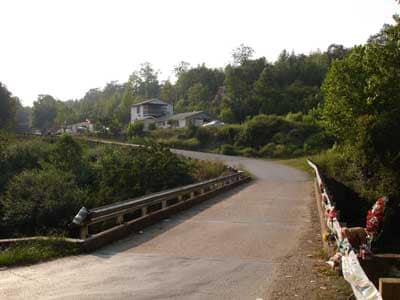
|
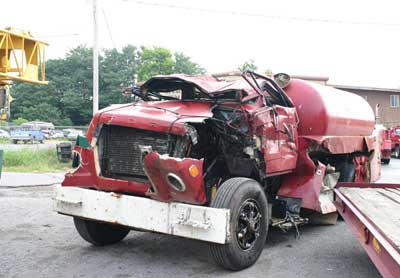
|
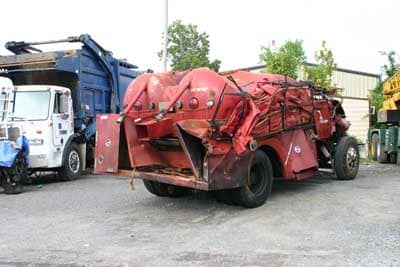
|
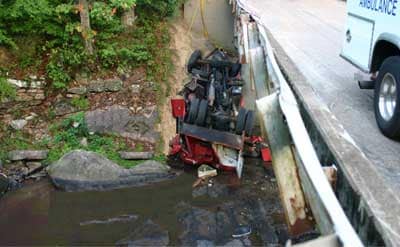
|
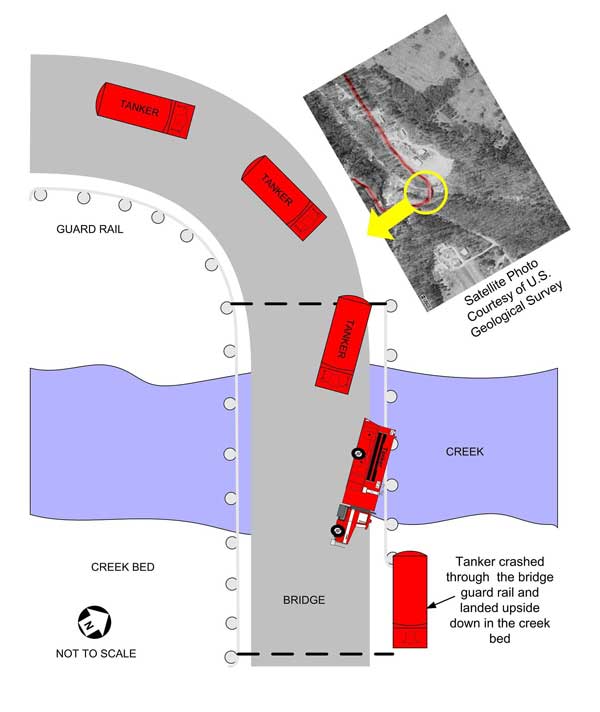
|
|
Diagram. Aerial view of incident scene
|
This page was last updated on 04/26/07.
